The BIPV system:The Perfect amalgamation of Urban development and Energy generation
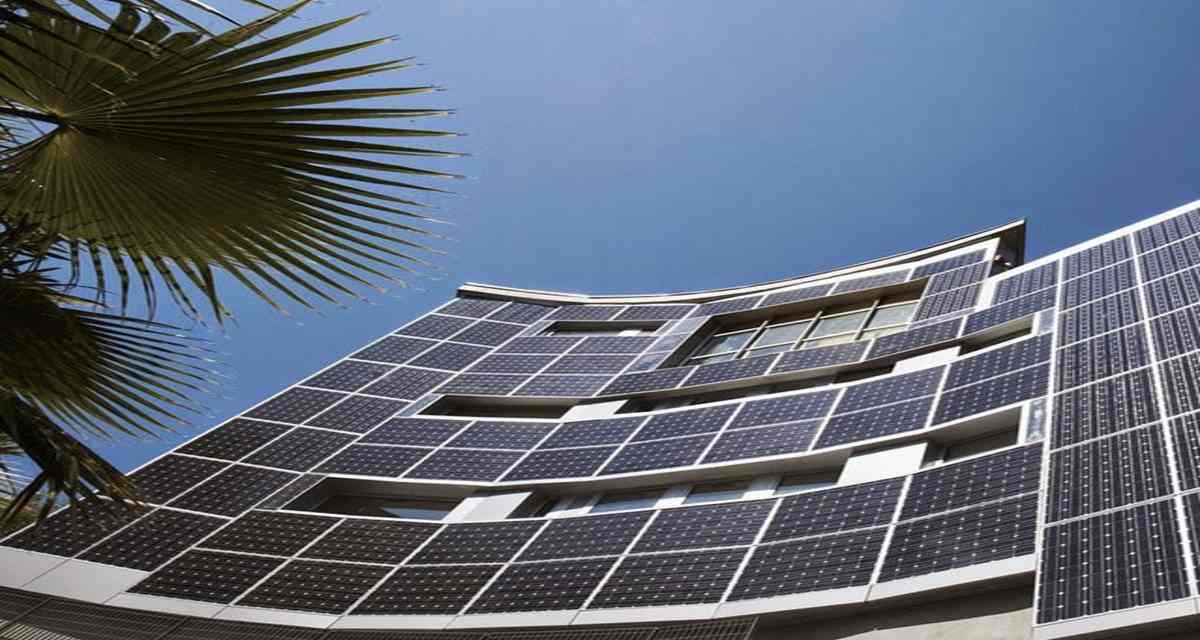
Introduction
Building Integrated Photovoltaic (BIPV) is a branch of Photovoltaic (PV) system that describe the process of using building parts to generate energy, the building materials serve their construction purpose and use to generate energy concurrently. It is an integration of PV into the building envelop rather than using separate mounting material and space. Growing concern for reduced cost of installing PV system brought about innovation in developing multifunctional PV products that works as building materials. BIPV has the following better features over Building Applied Photovoltaic (BAPV); Lighter weight, aesthetically pleasing, superior wind resistance and incorporation of modules directly into the building.
PV cells used in producing BIPV products are of several technologies which can be broadly divided into crystalline cells and thin-film cells technologies. The crystalline cells are of two types, monocrystalline with higher efficiency and polycrystalline with slightly lower efficiency. Both types of module can be produced in different shape and different level of transparency as may be required. There are different types of BIPV which are represented in the figure below, their applications are varied which include building roof, shading systems, external building walls, façade, skylights, PV canopy and balcony. Some of the multi-functionality element that drive PV products and applications are as follows:
- Architectural design
- Light and visual consideration
- Sun protection
- Thermal insulation
- Thermal control
- Weather protection
- Sound insulation
Innovation in the field of BIPV has led to development of different product being use in building construction, these products are in form of foils, tiles, roof slate, thin-film roof, bifacial cell, dyed sensitised/semi-transparent cells, solar cell glazing products and modules like conventional PV modules.
BIPV can be grid connected or off-grid systems. This article focuses on grid connected BIPV system, it basic structure is shown in figure below.
History of BIPV system
In the late 70s, for the first time in the history a projects of advance distributed PV systems got sponsored by the US Department of Energy (DOE). This results in the new wave of PV systems in market by the end 1980s. by that time, the giants such as General Electric, Solarex and Sanyo had developed a prototype of BIPV. In the following recent years, PV technology became increasingly efficient and commercial, all over the US. In 1993, to promote the commercialization DOE initiated a program known as Building Opportunities in the United States for PV. Meanwhile, organizations in Europe and Japan have developed similar programs around the same time. Since BIPV was mainly known for displaying solar applications in sustainable building designs, it was considered a niche product as compared to rack-mounted PV products. Built in 1980, one of the first US homes with BIPV were later integrated into commercial structures such as the 4 Times Square Building in New York City in 2001, where about 15 kW of amorphous silicon BIPV was built. More recently, larger BIPV systems were installed including a 6.5-MWp DC system on China’s Hongqiao Railway Station, completed prior to the 2010 Shanghai World Expo. At the simplest level, BIPV systems are adaptations of traditional PV module designs and installation methods; early model designs for different buildings and architectural features were also highly customizable. BIPV products today have more standardized designs and are designed to be compatible with many common building materials. Although market prices for BIPV are still higher than those for rack-mounted PVs, new models deliver lower costs and better performance than previous BIPV systems.
Overall, BIPV ‘s global deployment is limited as compared with rack-mounted PV deployment. The total installed capacity of BIPV (and related semi-integrated PV products) worldwide, by the end of 2009, was estimated at 250–300 MW by some estimates. At that time, this represented about 1% of the total installed power of distributed PV systems.
Types of BIPV system
In-roof solar panels
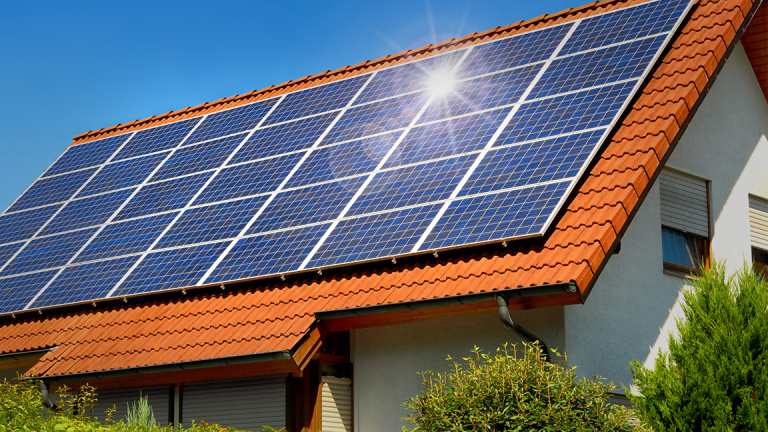
Roof integrated solar panels are similar to traditional ones on roof panels, except that they are installed in place of a section of tiles and act as the covering roof. Most people like roof panel aesthetics, because they are almost in line with the floor. The roof-integrated PV is around 5-10 percent less effective than on roof PV modules due to the reduced ventilation. But this exceeds the design appeal for new builds and refurbishments, where they’re quite successful.
Complete solar roof

Extending the concept of integrated panels, you can fully forgo conventional roofing and have a full solar roof. Panels can be fitted across the entire roof area with specially designed modules, using dummy panels where generation is not feasible.
Solar tiles
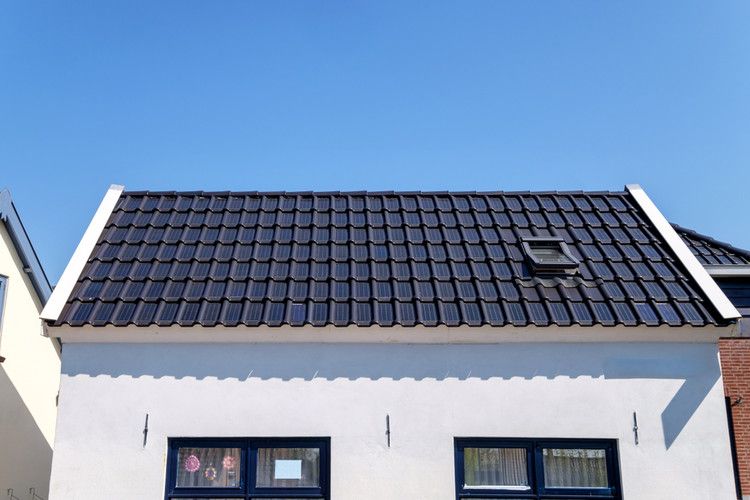
If conventional panels have an off-putting look, then solar tiles can be the way to go. PV units emulating standard roof tiles are indeed a growing field, so some amazing products are already available. You cannot tell the difference when the entire roof is filled with PV or dummy tiles.
Thin film solar

Thin film is a kind of solar module widely used in BIPV systems. It’s made of extremely thin layers compared to traditional crystalline materials, resulting in a material that can be used on curved surfaces or semi-transparent facades. Thus, thin film performs better in low light, high temperatures or unfavourable angles.
Solar façades
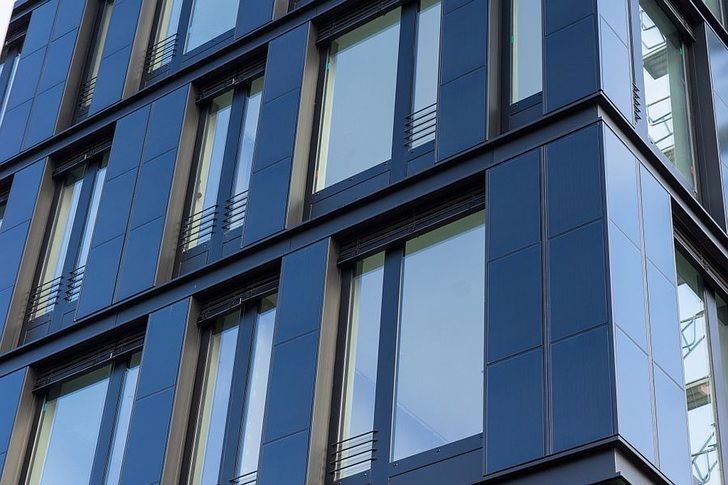
Most large multi-storey buildings add curtain walls or façades to maximize the energy efficiency or design. With the additional impact of free, renewable energy, BIPV facades will accomplish this function. While they can be built from crystalline plates, thin film solar is typically used at vertical angles and in shade for its superior efficiency because the sides of tall buildings are usually vertical and often shaded. Also, the multi-layered BIPV materials allow it to provide noise insulation when used as a building cover.
Solar glass
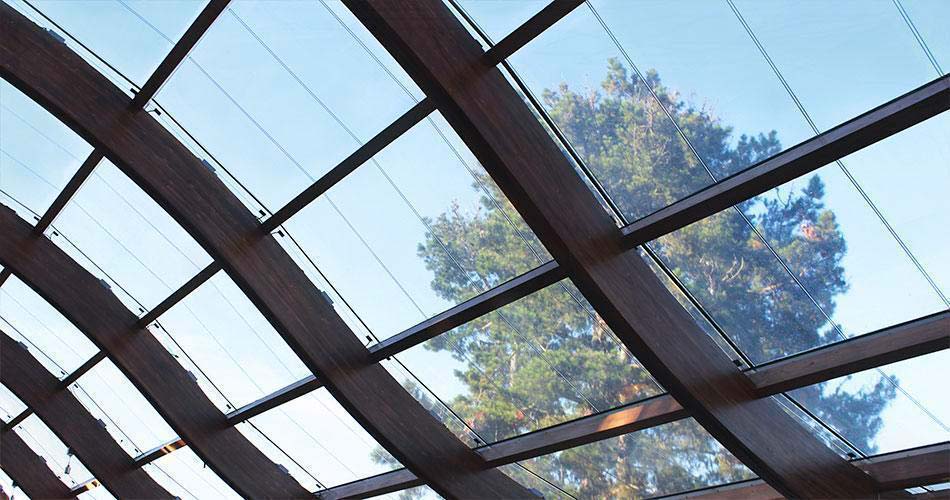
Replace conventional glazing with solar glass to generate energy where there is restricted roof space, as is often the case for multi-storey buildings. Solar windows and skylights in a range of colours, can be rendered fully opaque or translucent up to 50 percent. In addition to producing electricity, solar glass has the advantages of minimizing glare and enhancing insulation of temperatures-all of which are critical in large office buildings. PV glazing reflects infrared light which reduces the transfer of heat through the glass. This helps to keep heat out during the summer.
Coloured panels

Coloured panels could be designed to suit existing buildings or for a specific aesthetic. Traditional colours are crystalline blue / black and thin film brown / black, but layers of coloured laminate or glass may be used to obtain alternate colours. Colouring the modules results in decrease in production by 5%.
Major cost categories of BIPV
Installation cost: Firstly, differences in installation costs between the rack-mounted PV test case and the BIPV cases are determined by each system’s installation methods and material specifications. In the BIPV case, the most important difference in construction costs is the removal of racking equipment and associated labour costs. Racking components act as a direct interface between PV modules and rooftop structures and the BIPV cases remove the need for this robust interface of hardware.
Secondly, we assume that the versatility of BIPV as a roofing material, and with its smaller module size can allow project developers to use low-cost roofing contractors to install products using conventional roofing methods. BIPV cases have cost advantages because we assume that electricians are only required for the final cabling and commissioning steps; However, as the BIPV modules are smaller, more overall time is needed for the modules to be mounted per-area.
Module cost: In addition to the versatility of PV systems, we believe that modules in the BIPV cases have the efficiency of roofing items, and we presume that this is accomplished using more materials than those used in existing PV modules. it is understandable that BIPV product designs are highly specific to materials and may involve unique framing, lighting, adhesives, and materials to reduce heat gains. Different BIPV module designs can also lead to trade-offs between cost of the module and cost of installation.
Flexible packaging cost: There is ongoing debate about the importance of flexible PV and BIPV products, but flexible form factors are not needed by BIPV. The most commonly used products are rigid and use c-Si technologies, among the currently installed BIPV and semi-integrated PV designs. Specific opportunities may exist for flexible BIPV items such as commercial buildings, where roofing materials are often modular, or for specialized applications such as military tents or tensile fiberglass roofed buildings. Opportunities for non-planar items such as S-tiles may also exist in the residential rooftop market. In both the cases it is important to balance the potential advantages of flexible form factors against additional costs and performance considerations.
The thin-film technologies studied and can be built into flexible BIPV products and there are some advantages as following:
- flexible modules appear to have less weight than glass modules (up to 90% lighter) and lower shipping and installation costs.
- Another benefit is that they can better fit building areas with minimal structural support.
- Different tolerances for long-term exposure to ultraviolet radiation, for example, can affect the anti-soiling properties transmissivity and the adhesive stability of materials, which can significantly affect device performance.
Advantages of BIPV
- Cost savings – Initial installation cost is offset by reducing the amount of building materials and labour work.
- Reduce energy cost and capable of generating income.
- Environmental friendly – system does not generate emission and noise.
- Low operating and maintenance cost.
- Multi-functionalities.
- Architectural design element and aesthetic.
- Building structural support.
- Sound protection and insulation.
- Urban installation friendly.
Conclusion
In conclusion, the development of the BIPV systems started in the early 1990’s. This method made significant progress in the early 2000s with zero energy consumption, but this technology is not widely used now due to higher costs compared to conventional PV system. But, because of its high performance, and both heat and electricity output, it is a promising technology. It is obvious that significant developments in this field will occur in the coming years.

